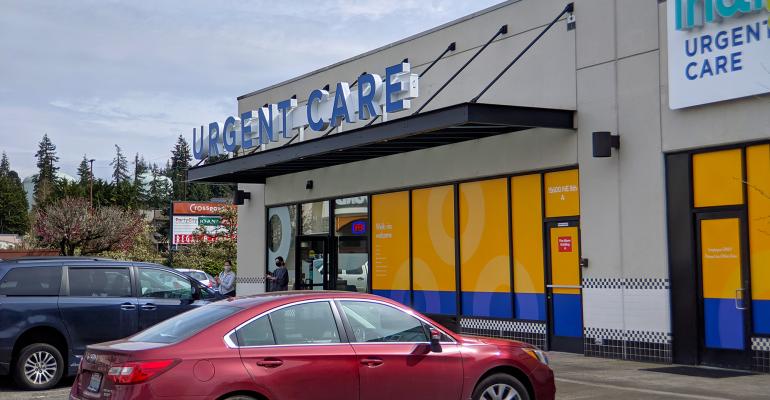MedTail (medical retail) has been growing for years due to changing demographics, technological evolution and the need for diverse, specialized, affordable and convenient access to healthcare. However, in the wake of COVID-19 and demographic shifts in the U.S. that had been taking place for several years, but expanded rapidly since 2020, the growth of these trends has become even more striking. From the perspectives of healthcare providers, patients and real estate investors, it is essential to understand these shifts and think about the implications going forward.
At OrbVest, we had our busiest year ever in 2021, closing 10 acquisitions. COVID-19 tested, and validated, our strategy, demonstrating the strength and resilience of healthcare assets during uncertain times. We collected on average above 95 percent of rents owed by all our tenants in our buildings. Compared to the recent performance of traditional retail and commercial office real estate, the differences are stark.
Covid created winners and losers, with shifting demographics and population growth trends accelerating the migration to the Sun Belt and spurring innovation throughout the healthcare sector, with MedTail being a direct beneficiary of the pandemic-related dislocations in the healthcare system.
MedTail will not replace hospitals. But these properties are critical components and additions to our healthcare system. MedTail can help provide populations, namely seniors, with affordable, specialized and easily accessible facilities in population centers.
The rise of MedTail is a fascinating hybrid between healthcare and retail. What’s occurring is an increased prevalence of healthcare facilities in retail centers. With the future of bricks-and-mortar retail in question, and shopping center availability and affordability waning in competitive real estate markets, healthcare tenants are relocating to retail centers in droves. Look at recent deals involving incorporating up to 700 VillageMD primary care clinics in Walgreens, and Walmart’s partnership with Oak Street Health, for example.
In a recent survey, Tether Advisors found that on average, “Nearly 80 percent of private equity, commercial real estate and retail healthcare respondents believe MedTail investment will increase in the coming year and that COVID-19 bolstered the sector’s outlook.”
A Grandview Research report also showed that the U.S. retail clinics market size was valued at about $1.4 billion in 2016. By 2025, it’s projected to grow exponentially at a CAGR of 20 percent.
But what exactly is driving MedTail’s growth?
Increased real estate demand from the segmentation of wellness and acute care locations is one driver for MedTail’s growth.
MedTail has been a growing real estate trend since before the pandemic. But the pandemic accelerated this growth primarily due to how effective the segmentation of healthcare facilities has been, especially when it comes to preventative wellness.
There has been a shift from the hospital as the foundation of American healthcare, to segmentation into more specialized centers for specific medical needs. Ambulatory care and out-patient care actually worked better when they had dedicated facilities outside of hospitals during the pandemic's initial waves. The “medical home” model was also a big pandemic winner through grouping primary care and specialty care in consolidated locations along with accompanying services such as imaging, pharmacy and laboratories. According to JLL, “The pandemic will likely advance the trend for hospitals to focus more on critical in-patient care as preventative medicine moves to more convenient locations in the heart of demographic centers."
Demographics are also driving healthcare’s segmentation with increased demand for preventive and personalized care. But this is not exclusive to seniors. Millennials and working parents desire specialized and preventative care for not only themselves, but for their kids. This could also be a result of Medtail’s convenience factor.
Convenience, regardless of the age bracket, is a primary driver for MedTail’s growth
Many real estate players are focusing more on traditional retail locations for medical properties due to proximity and convenience.
Convenience doesn’t necessarily have a universal definition for every age bracket. Some value convenience to shopping facilities. Others value convenience to population centers. Some value proximity to their homes or work locations. But this is only part of the equation.
Convenience is another byproduct of demographic shifts and segmentation. According to healthcare real estate firm HBRE, small towns and remote areas that once had little access to medical facilities are seeing more options now due to MedTail's rise. Hospital volume has been rising, and these facilities can be complicated to navigate. You have to consider all aspects of convenience and lifestyle integration, no matter which age cohort you analyze. Long-term, this could very likely be a trend too. Hospitals will probably focus on higher acuity in-patient care over the long term, opening up a need for additional real estate dedicated to lower-acuity, lower-cost facilities in more accessible locations.
When evaluating real estate acquisitions for OrbWest, we are looking at macro factors like population growth and employment growth, but also traffic patterns, new road construction, parking availability, visibility by and from major highways and thoroughfares, proximity to local hospitals and how these factors directly impact the value of our properties.
In looking ahead to the immediate future of healthcare commercial real estate, and with COVID-19 still very much on our minds, it is clear there is a growing need for diverse, specialized, affordable and convenient access to healthcare. This has attracted the attention and interest of institutional investors in acquiring medical office buildings and MedTail properties in areas of large, stable populations or areas with projected population growth, particularly in Sun Belt states.
Martin Freeman is the co-founder and CEO of OrbVest, a global real estate investment firm.




